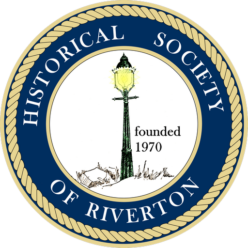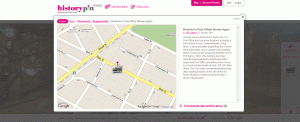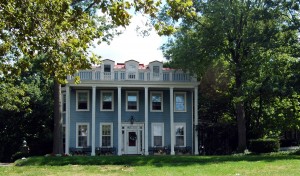
I felt like my name had just been listed in Boyd’s Philadelphia Blue Book, that fashionable private address directory for the socially elite of the late 1800s when HSR President Gerald Weaber, myself, and our spouses received invitations to attend the Clothier Family Reunion recently. Society members Mary Louise Bianco-Smith and Ken Smith hosted the event at their Bank Street home on Sunday, June 5, 2011.
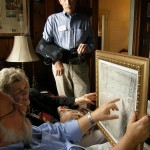
There we mingled with several generations of descendants of Caleb Clothier, one of Riverton’s ten original founders, and listened to tales about their ancestors and Riverton history in the very home where Mr. Clothier had lived. We toured the grand villa so faithfully restored and decorated that it looks just as if Caleb and the missus just stepped out for a stroll along the river.
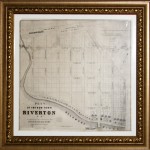
Noted journalist Sally Friedman, writing for the Philadelphia Inquirer, produced a wonderful piece about the day’s events accompanied by several professional photographs. Ms. Friedman, notebook in hand, earnestly questioned many persons that day as her photographer inconspicuously captured priceless images of this rare convergence of the extended Clothier Family.
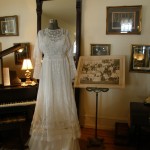
When the questions came to me about the history of Riverton and the founder’s home in which we were visiting, I referred the reporter to the ultimate expert. I mean, how does one give a person a crash course on 160 years of Riverton history?
I sent Ms. Friedman the link to the Borough of Riverton’s website to find the concise Town History which Mrs. Betty B. Hahle wrote in 2004. You can see the marvelous result of the correspondent’s due diligence in getting the facts aligned with the Clothier family saga at the philly.com website.
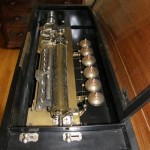
Click here for a short video of Robert Taylor demonstrating the intricate imported music box mentioned and pictured in the Inquirer article.
For our contribution to the historical record I consulted some of Betty Hahle’s research stored in our archives which we have not yet posted on this website. The best capsule description of how Riverton began might be in Mrs. Hahle’s 1990 introduction to the VHS videotape version of The Romance of Riverton, a deteriorating nitrate-based 1926 film which she helped rescue in 1980, by first having it transferred to modern safety film, then to videotape.
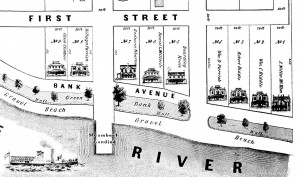
“Riverton was founded in 1851 by a group of ten men usually referred to as ‘Philadelphia merchants’ who were seeking a place to build their summer homes away from the City’s problems, yet close enough to commute to their Center City places of business.
They were familiar with this area from family ties in the area, and from Friends’ meetings, and jointly purchased 120 acres of Joseph Lippincott’s farm that lay between the Delaware River and the railroad line. Robert and William C. Biddle, Prof. Charles D. Cleveland, Caleb and James Clothier, Chalkley Gillingham, Daniel L. Miller Jr., Dillwyn and William D. Parrish, and Rodman Wharton engaged architect Samuel Sloan to design their new village, to be called ‘Riverton.’ His plan included not only the founders’ riverfront villas, but also 105 building lots, streets, a walled and landscaped riverbank, a pier for steamboat landings, a railroad station at the upper end of town, and a small general store on the point opposite it. According to the noted historian of American architecture, Henry Russell Hitchcock, Riverton was the first wholly planned residential subdivision in America.”
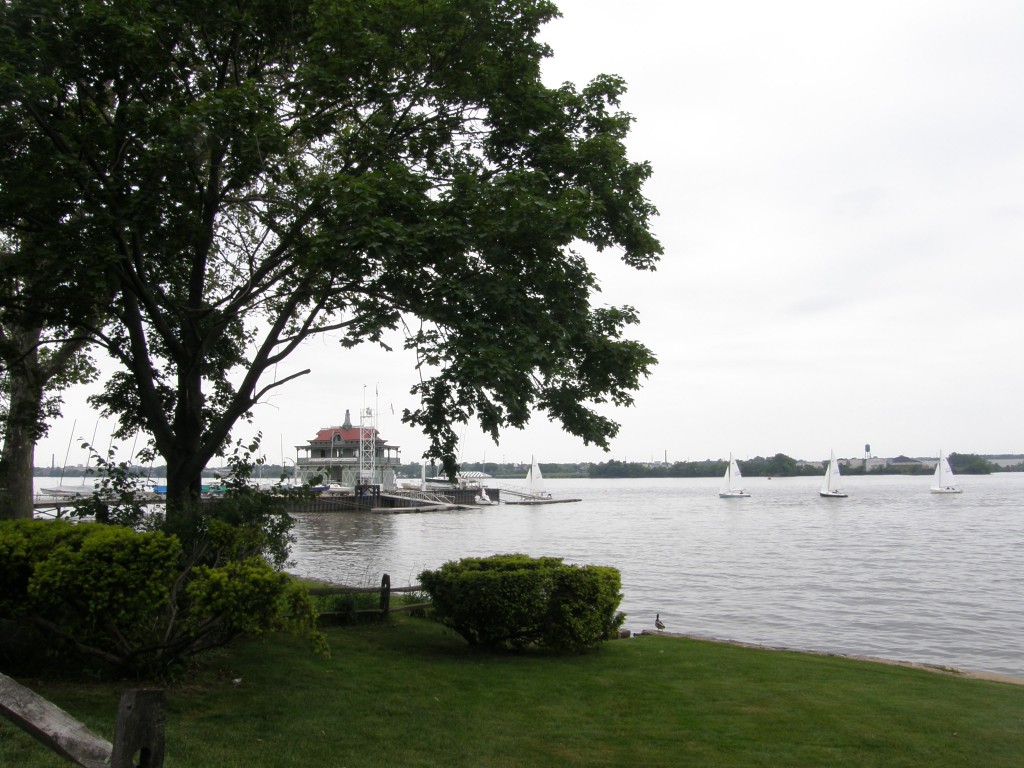
From Betty’s “Yesterday” column in the February 1981 Gaslight News we learn briefly of the business dealings of the ten “Philadelphia merchants”:
“The Philadelphians who founded the village of Riverton lived and/or had businesses in Old Philadelphia, shared a love of sailing, and a friendship and trust that permitted arrangements to be sealed, with a handshake. The Jersey side of the Delaware was familiar to them not only from sailing into its coves, but also through business contacts. William D. Parrish had for some years advertised in Burlington county papers (wholesale dealer in paper, rags, school books, blank books, writing paper, printing and wrapping paper, wall and. curtain paper, all at manufacturer’s prices), as had others of the group. Dillwyn Parrish was a druggist, Robert Biddle a hardware merchant, Caleb Clothier dealt in bricklaying, Rodman Wharton in paints, and Prof. Charles D. Cleveland”… “had a girls’ school. Miller McKim”… “had an anti-slavery office near Cleveland’s school…”
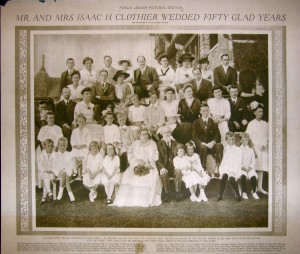
Memorial testimony at a meeting recorded in the Friends’ Intelligencer United with the Friends’Journal, Philadelphia, Sixth Month (June) 13, 1885, regarding the “humble and upright life” of Caleb Clothier mentions his involvement in the Abolitionist Movement: “He was early an earnest worker in the Anti-Slavery cause, and many a poor fugitive from bondage received his active and material aid.” Riverton is never mentioned, however, in this lengthy obituary from the Quaker perspective.
From another “Yesterday” column in the November 1979 Gaslight News we learn that Caleb Clothier sold the property and … “Edward Ogden, capitalist and 1st Mayor of Riverton, lived in the Caleb Clothier house at 503 Bank.”
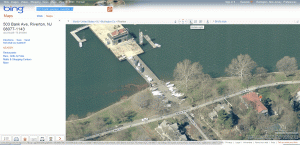
Here’s a link to a Bing Map of 503 Bank Avenue. You should see a bird’s-eye aerial photo map with a “pin” stuck in the location for 503 Bank.
You can choose to further explore the Riverton of today by using the navigation controls along the top margin of the map to zoom or rotate your view.
Regular readers may recall the January 30th entry, “Whoa, this is heavy!” which described the new Historypin website in which you can take a virtual drive through some of Riverton’s main thoroughfares.
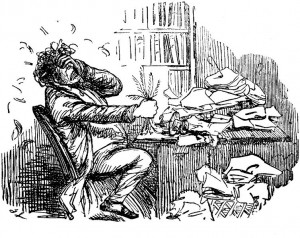 From the Editor’s Desk: Readers, please note that you can find a summary of the Annual Meeting held at The Bank on Main on June 9, 2011. on the Programs and Events page.
From the Editor’s Desk: Readers, please note that you can find a summary of the Annual Meeting held at The Bank on Main on June 9, 2011. on the Programs and Events page.
The Society may be on summer hiatus, but please continue to check back here for more history of Riverton and the region. If you have something to bring to our attention regarding a story idea, comments or criticism, or you would like to make a donation which would help us in our mission to “discover, restore, and preserve local objects and landmarks, and to continue to expand our knowledge of the area,” please do not hesitate to bring it to our attention. Remember our easy address, rivertonhistory.com and tell your neighbors and friends who have moved away about us. – John McCormick, Gaslight News Editor
